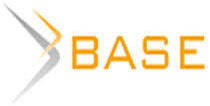Information structure of the tourist geoportal
Many countries of the world have accumulated terabytes of digital maps created by both professionals and amateurs, but many of them have not become available to the target audience. Since the tourism industry is no exception to the general trend, it is faced with the task of making existing cartographic materials available to the public and providing a cartographic basis for research, design and creation of new tourism products. Geoportals can help in solving this problem. The purpose of the study is to develop the structure and content of a tourist geoportal capable of providing users with all the necessary information. To achieve this goal, the work studied the attractiveness of the term "geoportal" among scientists and users of the Yandex search engine, the information content of tourist information of regional and foreign geoportals. The target audience of the tourist geoportal are tourists, tourist organizations, government agencies that control and manage the tourism industry in the region. When developing the information structure of the tourist geoportal, the authors took into account the heterogeneity of the interests of the target audience. A different set of sections and thematic layers was proposed for each target audience, since the high-quality information structure and fullness of the geoportal will allow visualizing research results and making them available to the public, create a base for further scientific research and educational work, meet the needs of the target audience, and will also contribute to the development of tourism in the region.
Mitrofanov, E. М. and Koroleva, I.S. (2023), “Information structure of the tourist geoportal”, Research Result. Business and Service Technologies, 9 (4), рр. 25-36. DOI: 10.18413/2408-9346-2023-9-4-0-3
















While nobody left any comments to this publication.
You can be first.
Crampton, J. (1995), “Cartography Resources on the World Wide Web”, Cartographic Perspectives, 22, pp. 3-11. DOI: 10.14714/CP22.780/
Deilmann, C. and Hennersdorf, J. (2009), “GIS analyses of low density urban areas—how much surface per floor space? ”, In SUE-MoT Conference, pp. 716-723.
He, Xin, Hans, Persson and Anders, Östman (2012), “Geoportal usability evaluation”, International Journal of Spatial Data Infrastructures Research, 7, pp. 88-106.
Koroleva, I.S. (2023), “Russian regional tourist geoportals: increasing the detail of thematic content”, International scientific and practical conference Economic and Managerial Congress, pp. 80-85.
Masser, Ian. (2005), “GIS worlds: creating spatial data infrastructures”, Vol. 338, Redlands, Esri Press.
Michał, B. and Dariusz, G. (2014), “Application of network analysis for development and promotion of sustainable tourism in public forests” Folia Forestalia Polonica, series, 56 (2), pp. 105–112.
Robinson, B.V. (2013), “Issues of improving the efficiency of management of regional tourism development resources”, Bulletin of the SGGA, Novosibirsk, 3(24), pp.63-71.
Safaryan, A.A. (2015), “The problem of information security of travelers in the context of new trends”, Geography and region collection of tr. International Conference, Perm, 2015, pp. 224-229.
Sarancha, M.A. (2011), “The potential and organization of the development of tourist and recreational activities in the Udmurt Republic” geographical analysis and assessment: diss. ... doct. Geogr. Sciences, Voronezh, 2011, pp. 309.
Shaitura, S.V. (2015), “The use of geoportals in e-commerce Bulletin of Moscow State University”, Series: Economics, 2015, 2, pp. 120-126.
Sigala, M. (2009), “Geoportals and Geocollaborative Portals: Functionality and Impacts on Travellers' Trip Panning and Decision Making Processes”, International CHRIE Conference-Refereed Track, pp. 28. [Online], available at: http://scholarworks.umass.edu/refereed/Sessions/Friday/28 (Accessed 04 September 2023).
Tait, M. G. (2005), “Implementing geoportals: applications of distributed GIS”, Computers, Environments and Urban Systems, 29, pp. 33-47.
Ushakova, E.O. (2013), “The effectiveness of the introduction of geographic information management systems for regional tourism development resources Accessed”, Russian entrepreneurship, 21 (243), pp. 76-85.
Zuikov, V.S. (2015), “Creation and development of regional spatial data infrastructure on the example of the Ulyanovsk region”, Fundamental Research, 2-25, pp. 5681-5685. [Online], available at: https://fundamental-research.ru/ru/article/view?id=38487 (Accessed 04 September 2023).